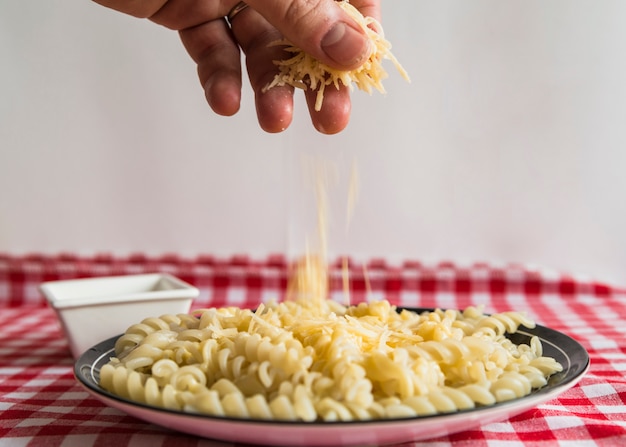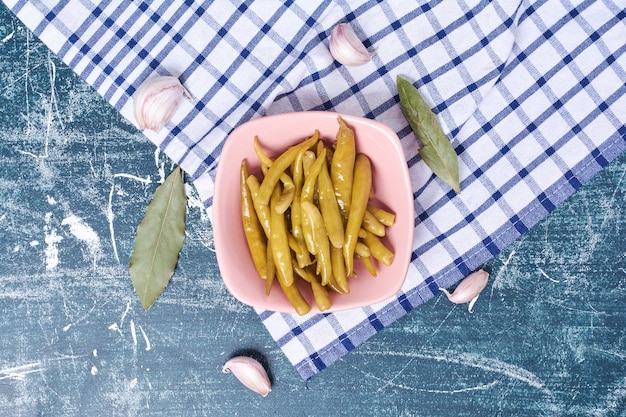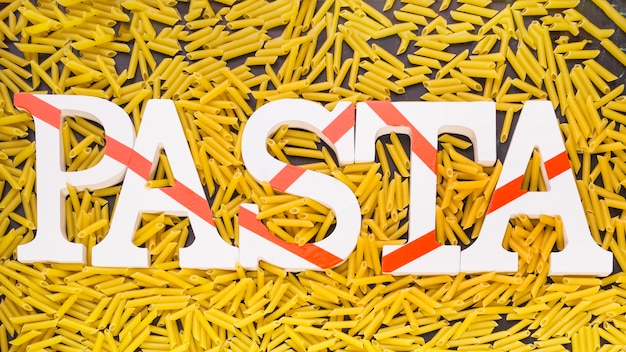Penne pasta. A classic. It's versatile, it's delicious, and it always seems to bring people together around the table. But how long do you actually cook it for? I’ve been there – staring at the pot, not sure if it’s ready. Overcooked? Undercooked? A mushy mess? I've definitely been there. But don't worry, I'm here to guide you to pasta perfection. This is your ultimate guide to nailing that perfect penne pasta cooking time.
(Part 1) The Basics: Getting Started

Okay, so you’ve got your penne pasta. You’ve probably already got the sauce in mind – a rich tomato sauce, a creamy pesto, or maybe even a simple sprinkle of Parmesan. But first things first, let’s talk about the basics of cooking pasta.
The Packaging Tells a Story:
Before we even grab the pot, take a look at the back of your pasta package. Most brands will have instructions, usually stating the suggested cooking time. Remember, these times are just guidelines. Your pasta might need a little extra time, or perhaps a bit less, depending on a few factors. But they’re a good place to start!
The Magic of Boiling Water:
Now, let’s talk water. It’s essential for perfect pasta. We're talking a large pot filled with bubbling, ferociously boiling water. The more water you use, the less the temperature will drop when you add the pasta. This is crucial for maintaining an even cooking temperature, so you get perfect results.
Salt is the Key:
Before you toss in the pasta, add a good amount of salt to the boiling water. Don’t skimp on this – we’re talking enough to make the water taste like seawater. This seasons the pasta as it cooks, giving it a wonderful depth of flavour. It also helps prevent the pasta from sticking together.
(Part 2) Understanding Cooking Times: More Than Just Numbers

The classic penne pasta cooking time? About 10 to 12 minutes. But hold on, there’s a bit more to it than that!
Factors That Influence Your Timing:
Pasta Size and Shape: Even within penne, you’ll find different sizes. Some penne might be a bit shorter or thicker than others, meaning they need a little extra time to cook through.
pasta brand: Different brands use varying types of flour and have slightly different shapes. This can affect how quickly they cook.
water temperature: If your water isn’t boiling furiously, it’ll take longer for the pasta to cook. Make sure that water is bubbling like a cauldron!
Quantity: Cooking a huge pot of pasta will naturally take longer than just a small portion for yourself.
Your Preference: Some people like their pasta with a bit of firmness, while others prefer it more tender. It’s all about personal taste!
The Secret to "Al Dente" Perfection:
The real trick to perfectly cooked pasta is achieving al dente. This Italian term literally means “to the tooth.” It means the pasta is cooked through, but still has a slight firmness to the bite. It’s the perfect balance – not too soft, not too hard. It’s the difference between a delicious pasta dish and a disappointing one.
(Part 3) Cooking Your Penne: A Step-by-Step Journey

Okay, now that we’ve got the basics covered, let’s get cooking!
1. Get the Water Bubbling:
Fill a large pot with water, making sure it’s enough to comfortably hold your pasta with plenty of space to move around. Then, bring it to a rolling boil. The water should be bubbling furiously – a real symphony of boiling!
2. Season with Salt:
Once the water is boiling, add a generous amount of salt. Think of it as seasoning a big pot of soup. We want the pasta to absorb the saltiness as it cooks.
3. Add the Pasta with Care:
Carefully add the penne pasta to the boiling water. Stir it gently to prevent it from sticking together. The water will bubble and froth up – it’s a sight to behold!
4. Time to Set the Timer:
Start timing your pasta the moment it hits the boiling water. Don’t be tempted to keep peeking and stirring – let it do its thing!
5. The Taste Test:
About 2 minutes before the suggested cooking time, grab a piece of pasta and taste it. Is it firm and slightly resistant? That’s al dente! If not, keep cooking for another minute or two.
6. Time to Drain:
Once your pasta is perfectly cooked, drain it in a colander. Don’t rinse it unless you’re using it in a cold pasta salad – the starch in the pasta water helps to create a creamy sauce.
(Part 4) Beyond the Basics: Tips for Pasta Perfection
Now that you’ve got the basics down, let’s take your pasta skills to the next level with these extra tips.
The Magic of Pasta Water:
Remember that starchy pasta water you drained? Don’t throw it away! It’s pasta magic! Save a cup or two and use it to make your sauce. It adds a delicious creaminess and depth of flavour, taking your sauce to the next level.
Don’t Overcrowd the Pot:
If you cram all your pasta into a tiny pot, it won’t cook evenly. Make sure there’s enough space for the pasta to move around freely in the boiling water.
Stir It Up:
Keep stirring that pasta while it cooks! This helps prevent it from sticking together and ensures it cooks evenly. It's like a little pasta dance!
A Little Oil Goes a Long Way:
Adding a drizzle of olive oil to the boiling water can help prevent the pasta from sticking together. Just a tiny bit is all you need.
(Part 5) The Sauce Situation: Penne Pasta Pairing Guide
The beauty of penne pasta? It’s incredibly versatile. It can be paired with all sorts of delicious sauces. Here are a few ideas to spark your culinary inspiration:
Classic Italian Flavors:
Tomato Sauce: It’s a timeless classic for a reason! Try a chunky tomato sauce with basil, garlic, and oregano for a fragrant and flavorful dish.
Carbonara: A rich and creamy delight made with eggs, cheese, and pancetta. It's pure indulgence!
Alfredo: Another creamy favourite, made with butter, Parmesan cheese, and sometimes heavy cream. It’s a classic for a reason.
Beyond the Classics:
Pesto: A fragrant and vibrant sauce made with basil, pine nuts, garlic, olive oil, and Parmesan cheese. It adds a burst of freshness to your pasta.
Creamy Mushroom Sauce: Rich, earthy, and incredibly comforting, this sauce is perfect for a cozy dinner.
Spicy Sausage Sauce: A bold and flavorful option with italian sausage, peppers, and onions. It's a flavour-packed treat.
Tips for Sauce Success:
Consider Texture: Penne pasta works beautifully with both chunky and smooth sauces.
Match the Flavors: Think about the flavors of your chosen sauce and how they will complement the pasta.
Get Creative: Don’t be afraid to experiment and try new things! There’s a world of delicious sauce combinations waiting to be discovered.
(Part 6) What to Do with Leftover Penne Pasta
Leftover penne? Don’t you dare throw it away! There’s so much you can do with it.
Pasta Salad:
Transform it into a refreshing pasta salad with chopped vegetables, herbs, and a light dressing. It’s a perfect light lunch or picnic dish.
Baked Pasta:
Add a creamy sauce, cheese, and some vegetables, then bake it in the oven for a comforting baked pasta dish. It’s perfect for a family meal or potluck.
Pasta Soup:
Toss it into your favourite soup recipe for a hearty and filling meal. It’s a great way to use up leftover pasta and add some extra texture to your soup.
(Part 7) The Right Pot Makes All the Difference
When it comes to cooking pasta, the pot you choose plays a crucial role.
Choosing the Perfect Pot:
Size Matters: You need a pot large enough to comfortably hold the pasta and plenty of boiling water.
Material Matters: Stainless steel pots are excellent because they distribute heat evenly, ensuring your pasta cooks consistently.
Features to Look For: A lid is essential for keeping the water boiling, and a strainer basket can be handy for draining the pasta without lifting the heavy pot.
(Part 8) Don't Overcook Your Pasta
One of the biggest pasta mistakes? Overcooking. It's a common culprit for mushy, disappointing pasta.
Signs of Overcooked Pasta:
Mushy Texture: The pasta will lose its bite and become soft and mushy.
Starchy Water: The water will become cloudy and starchy, indicating the pasta has released too much starch.
Loss of Flavor: Overcooked pasta can lose its flavour and become bland.
How to Avoid Overcooking:
Check the Cooking Time: Always check the packaging for the recommended cooking time, but remember, it's just a guide!
Taste Test: About 2 minutes before the suggested time, taste a piece of pasta. It’s the best way to know when it’s perfect.
Don't Overcook: Don’t be tempted to cook the pasta for longer than necessary. Trust your taste buds!
(Part 9) The Art of Al Dente: Perfectly Cooked Pasta, Every Time
This is the key to pasta bliss. Al dente is an Italian term that means “to the tooth.” It means the pasta is cooked through, but still has a slight firmness to the bite. It’s that perfect balance that makes pasta so enjoyable.
How to Test for Al Dente:
Visual Inspection: The pasta should have a slight sheen to it and shouldn't be completely soft or mushy.
Taste Test: The pasta should be cooked through, but still offer a slight resistance when you bite into it.
The Fork Test: If the pasta breaks easily on the fork, it’s overcooked.
Tips for Achieving Al Dente:
Don't Overcook: Always check the cooking time and taste test the pasta.
Don't Rinse the Pasta: Rinsing the pasta can wash away the starch, which helps create a creamier sauce.
Use the Right Pot: A large pot with enough boiling water will help to cook the pasta evenly.
(Part 10) FAQs: Your Penne Pasta Questions Answered
Here are some common questions about penne pasta cooking time, answered to guide you to pasta perfection.
1. Can I Cook Penne Pasta in a Microwave?
It’s not recommended to cook pasta in a microwave. The pasta won't cook evenly and it won’t have the same texture as when cooked in boiling water.
2. How Do I Know if Penne Pasta is Undercooked?
If the pasta is still hard and chewy, it’s undercooked. Cook it for a few more minutes until it’s al dente.
3. What if I Overcook My Penne Pasta?
If you overcook your pasta, it’ll be mushy and lose its bite. You can try adding it to a pasta salad or soup, but it might be difficult to salvage.
4. Can I Reuse Cooked Penne Pasta?
Absolutely! Cooked penne pasta is great for pasta salads, soups, and baked pasta dishes. Just make sure to store it in the refrigerator and use it within a few days.
5. What is the Best Way to Store Leftover Penne Pasta?
Store leftover penne pasta in an airtight container in the refrigerator for up to 3 days. Don't add any sauce to it until you are ready to use it, as this can make it soggy.
(Part 11) Penne Pasta: A culinary journey
Cooking penne pasta is about more than just following a recipe. It’s about creating a delicious and satisfying meal that brings people together. It’s about embracing the simple pleasures of a hearty bowl of pasta, whether it’s a comforting weeknight dinner or a special occasion feast. So, next time you’re whipping up a batch of penne pasta, remember these tips and let your culinary journey begin!
Everyone is watching

Corn on the Cob: The Ultimate Guide to Perfectly Cooked Ears
Healthy MealsAh, corn on the cob. Just the name evokes images of sunny days, barbecues, and that sweet, juicy flavour that ...

Perfect Pork Roast Oven Cooking Time: A Guide to Delicious Results
Healthy MealsThere's something truly satisfying about a perfectly roasted pork. The aroma alone is enough to make your mout...

Ham Cooking Time: How Long to Bake, Smoke, or Boil a Delicious Ham
Healthy MealsAh, ham. It's a classic, isn't it? A real crowd-pleaser, especially around holidays. And when done right, it'...

Scallops: The Ultimate Guide to Perfect Cooking
Healthy MealsAh, scallops. Those delicate, sweet, and utterly delicious morsels of the sea. They hold a special place in my...

Spaghetti Squash: The Ultimate Guide to Cooking and Serving
Healthy MealsRemember that time you saw spaghetti squash at the supermarket, looking all bumpy and strange, and thought, "W...
